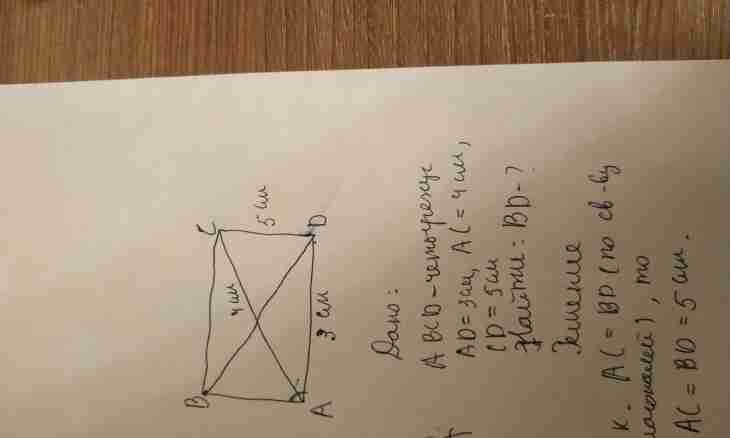The parallelogram has four corners. At a rectangle and a square all of them are equal to 90 degrees, other parallelograms can have any their value. Knowing other parameters of a figure, these corners can be calculated.
Instruction
1. The parallelogram is a figure which has opposite sides and also corners are equal and parallel. There are four types of a parallelogram, and three of them are a special case of this figure. At a classical parallelogram two sharp and two obtuse angles. At a square and a rectangle all right angles. The rhombus is similar to a classical parallelogram and differs from it only in what is equilateral. All parallelograms, irrespective of a look, have a number of the general properties. First, diagonals of this figure are always crossed in the point coinciding with their middle. Secondly, opposite corners are equal in any parallelogram.
2. In a number of tasks the classical parallelogram with two diagonals crossing among themselves is given. From a condition two of its parties and the area are known. It is enough to find one of figure corners. The communication formula between the area, the parties and a corner looks so: S=a*b*sin α where an is length of a parallelogram, b is width, α - an acute angle, S - the area. Transform this formula as follows: α=arcsin(S/ab). β find value of an obtuse angle, having subtracted value sharp of 180 degrees: β=180-α.
3. Corners of a rectangle and a square are not required to be found - they are always equal 90 °. The rhombus can have various corners, but in connection with identical lengths of all four parties the formula can be simplified: S=a^2*sin α where an is the party of a rhombus, α - an acute angle, S - the area. Respectively, the corner α is equal to value: α=arcsin(S/a^2). Find value of an obtuse angle the way stated above.
4. If in a parallelogram or a rhombus to carry out height, the rectangular triangle is formed. The party of a parallelogram will be a hypotenuse, and height - a leg of this triangle. The relation of this leg to a hypotenuse is equal to a parallelogram sine of the angle: sinα=h/c. From here the corner α is equal: α=arcsin(h/c).
